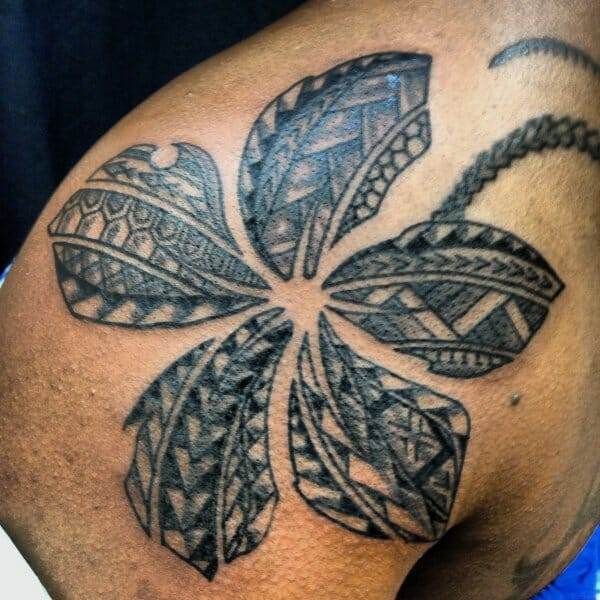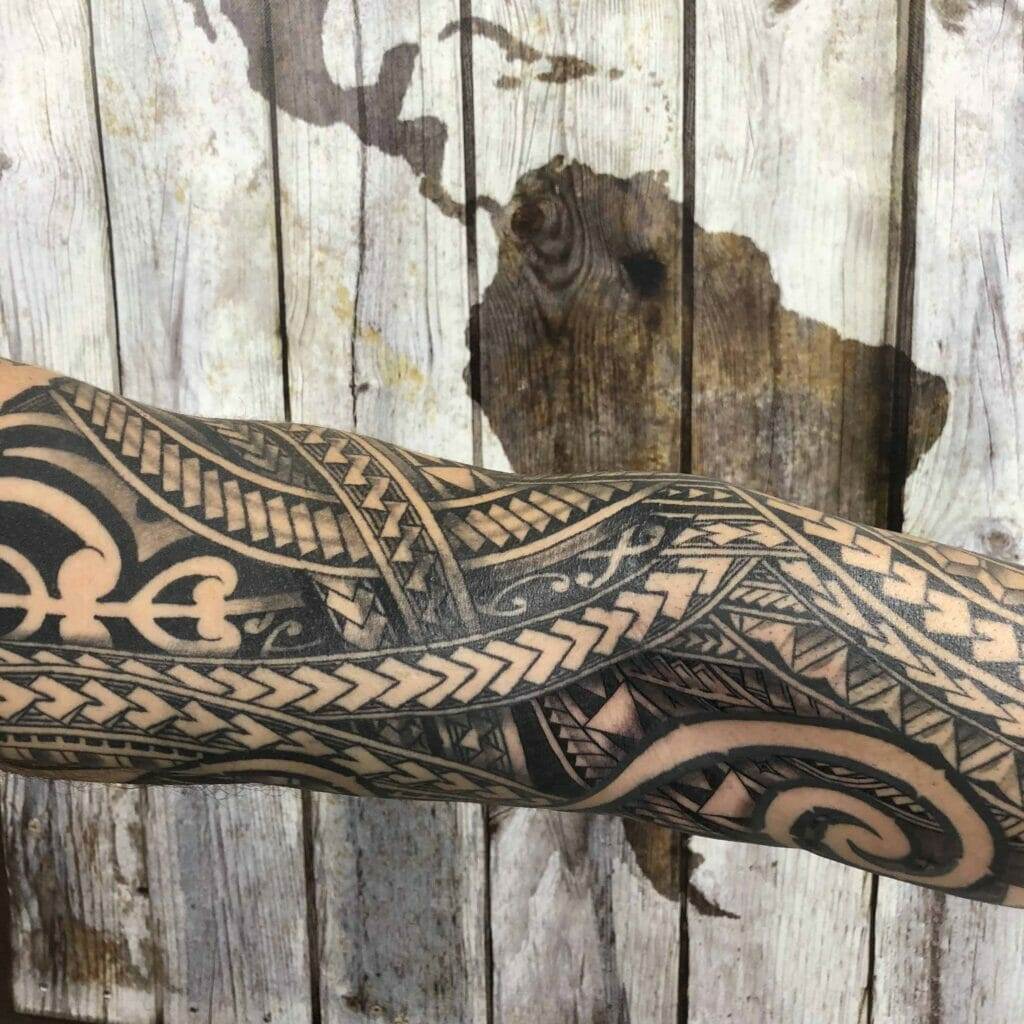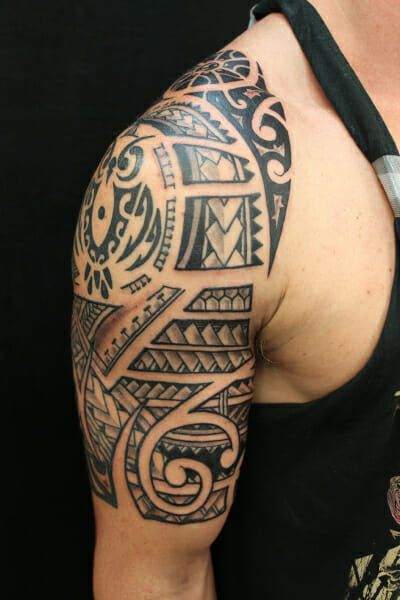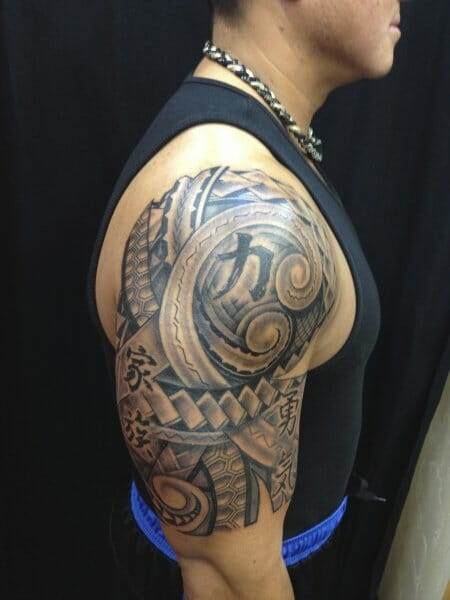Polynesian tattoos have a rich history that dates back thousands of years. Originating in the Polynesian islands of the Pacific Ocean, this ancient art form has spread throughout the world and has become increasingly popular in recent years. Polynesian tattoos hold deep cultural, spiritual, and artistic significance for the people of the Polynesian islands, and they continue to be an important part of their identity and heritage.
Polynesian tattooing has its roots in the ancient traditions and customs of the Polynesian people. It is believed to have originated in Samoa, where it was known as “tatau.” From there, it spread to other Polynesian islands such as Tahiti, Hawaii, and New Zealand. The art of tattooing was brought to these islands by the Polynesians who migrated there, and it quickly became an integral part of their culture.
Polynesian tattoos were not just a form of body art; they were also a way for people to express their identity and belonging. In Polynesian society, tattoos were used to signify social status, family lineage, and tribal affiliations. They were a way for individuals to show their place in society and their connection to their ancestors. Polynesian tattoos were also seen as a form of protection, with many designs believed to ward off evil spirits and bring good luck.
The Cultural Significance of Polynesian Tattoos: Expressing Identity and Belonging
Polynesian tattoos played a crucial role in the social structure of Polynesian society. They were used to signify social status, family lineage, and tribal affiliations. For example, high-ranking chiefs would often have elaborate tattoos that covered their entire bodies, while commoners would have smaller and less intricate designs. These tattoos served as a visual representation of an individual’s place in society.
Traditional Polynesian tattoos were made up of a variety of motifs, each with its own specific meaning. These motifs often represented elements of nature, such as animals, plants, and geometric shapes. For example, the shark symbolized strength and protection, while the turtle represented fertility and longevity. These motifs were carefully chosen to reflect the wearer’s personal beliefs, values, and experiences.
The Spiritual Significance of Polynesian Tattoos: Connecting with Ancestors and Gods
In addition to their cultural significance, Polynesian tattoos also held deep spiritual meaning for the people of the Polynesian islands. It was believed that these tattoos connected the wearer with their ancestors and gods. The process of getting a tattoo was seen as a spiritual journey, with the tattoo artist acting as a conduit between the physical and spiritual realms.
Before getting a tattoo, individuals would often participate in spiritual rituals and practices to prepare themselves for the experience. These rituals would vary depending on the specific island and culture, but they often involved prayers, offerings, and purification ceremonies. It was believed that these rituals would help to ensure a successful tattooing process and establish a connection between the wearer and their ancestors.
The Artistic Significance of Polynesian Tattoos: The Beauty and Complexity of Traditional Designs

One of the most striking aspects of Polynesian tattoos is their intricate and detailed designs. Traditional Polynesian tattoos are made up of a series of geometric patterns and symbols that come together to create a larger image. These designs are often symmetrical and repetitive, creating a sense of balance and harmony.
Polynesian tattoo artists use a variety of techniques to create these intricate designs. One common technique is called “tapping,” where the artist uses a small mallet to tap a needle into the skin. This creates a series of small dots that form the basis of the design. Another technique is called “hand poking,” where the artist uses a needle to manually insert ink into the skin. This technique allows for more control and precision, but it can also be more time-consuming.
The Evolution of Polynesian Tattoos: From Traditional to Contemporary Styles
Over time, Polynesian tattooing has evolved to incorporate new styles and techniques. While traditional Polynesian tattoos are still popular, many people are now opting for more contemporary designs that incorporate elements of other tattooing styles. These contemporary Polynesian tattoos often feature bold lines, vibrant colors, and a mix of traditional and modern motifs.
Contemporary Polynesian tattoos also allow for more personalization and customization. People can choose designs that reflect their own unique experiences, beliefs, and values. For example, someone might choose to incorporate symbols that represent their family or their favorite hobbies. This allows individuals to create a tattoo that is truly meaningful and personal to them.
The Process of Getting a Polynesian Tattoo: From Design to Application
Getting a Polynesian tattoo is a multi-step process that involves careful planning and preparation. The first step is choosing a design that is meaningful and personal to you. This can be a traditional Polynesian design or a more contemporary design that incorporates elements of other tattooing styles.
Once you have chosen a design, you will need to find a reputable Polynesian tattoo artist. It is important to do your research and find an artist who has experience and expertise in Polynesian tattooing. Look at their portfolio, read reviews, and ask for recommendations from friends or family members who have gotten tattoos.
Once you have found an artist, you will need to schedule a consultation to discuss your design and any specific requirements or preferences you may have. During the consultation, the artist will work with you to create a custom design that reflects your personal style and beliefs. They will also discuss the tattooing process and answer any questions you may have.
The Symbolism of Polynesian Tattoo Motifs: Understanding the Meanings Behind the Designs
Polynesian tattoos are made up of a variety of motifs, each with its own specific meaning. These motifs often represent elements of nature, such as animals, plants, and geometric shapes. Understanding the meanings behind these motifs is key to understanding the symbolism of Polynesian tattoos.
Animals are a common motif in Polynesian tattoos and often represent specific qualities or characteristics. For example, the shark symbolizes strength and protection, while the turtle represents fertility and longevity. Plants are also commonly used in Polynesian tattoos and often symbolize growth, renewal, and connection to the earth. Geometric shapes are another important motif in Polynesian tattoos and are often used to represent balance, harmony, and unity.
The Popularity of Polynesian Tattoos: From Tribal Markings to Global Trends
Polynesian tattoos have become increasingly popular around the world in recent years. What was once seen as a tribal marking has now become a global trend, with people from all walks of life getting Polynesian-inspired tattoos. There are several factors that have contributed to the growing popularity of Polynesian tattoos.
One factor is the increased visibility of Polynesian culture in mainstream media. Polynesian athletes, musicians, and actors have gained international fame and have helped to bring attention to their culture and traditions. This increased visibility has sparked interest in Polynesian tattoos and has made them more accessible to a wider audience.
Another factor is the growing appreciation for traditional art forms and cultural heritage. People are increasingly seeking out unique and meaningful ways to express themselves, and Polynesian tattoos offer a way to do just that. The intricate designs and deep symbolism of Polynesian tattoos resonate with people on a personal level and allow them to connect with their own heritage or explore a new culture.
The Controversy Surrounding Polynesian Tattoos: Cultural Appropriation and Respectful Representation
While the popularity of Polynesian tattoos has brought attention to the art form, it has also sparked controversy. Some people argue that non-Polynesian people getting Polynesian-inspired tattoos is a form of cultural appropriation. They argue that these individuals are taking something that is deeply meaningful and sacred to the Polynesian people and using it for their own personal gain.
Others argue that as long as the tattoos are done respectfully and with an understanding of the cultural significance, there is no issue with non-Polynesian people getting Polynesian-inspired tattoos. They argue that tattoos are a form of self-expression and that everyone should be able to express themselves in whatever way they choose.
The key to respectful representation lies in education and understanding. It is important for people to educate themselves about the cultural significance of Polynesian tattoos and to approach them with respect and sensitivity. This means understanding the meanings behind the designs, seeking out reputable artists, and being mindful of the cultural context in which these tattoos originated.

The Enduring Appeal of Polynesian Tattoos in a Changing World
In conclusion, Polynesian tattoos have a long and rich history that is deeply intertwined with the culture, spirituality, and artistry of the Polynesian people. They have served as a way for individuals to express their identity and belonging, connect with their ancestors and gods, and create beautiful and meaningful works of art.
While the popularity of Polynesian tattoos has grown in recent years, it is important to approach them with respect and cultural sensitivity. Understanding the meanings behind the designs and seeking out reputable artists are key to ensuring that these tattoos are done in a respectful and meaningful way.
In a world that is constantly changing and evolving, Polynesian tattoos continue to hold a special place in the hearts of those who wear them. They are a reminder of our connection to our past, our present, and our future. Whether you choose a traditional design or a more contemporary style, a Polynesian tattoo is a powerful symbol of identity, heritage, and self-expression.



